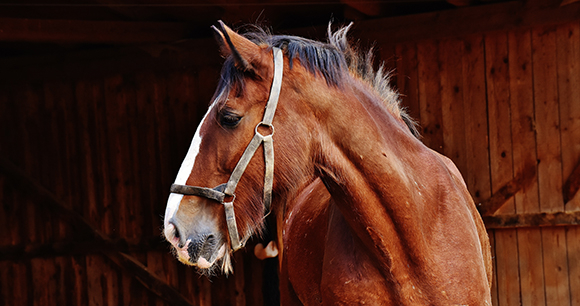
House of Representatives
Horse Transportation Safety Act (H.R. 3623)
Sponsored by Representatives Steve Cohen (D-TN), Brian Fitzpatrick (R-PA),
and Dina Titus (D-NV)
Hauling horses in double-deck trailers is dangerous and inhumane. These trailers do not provide sufficient headroom for horses to stand upright. They often endure long journeys in cramped positions and suffer serious injuries as a result. To address this problem, the bipartisan Horse Transportation Safety Act—led by Reps. Steve Cohen (D-TN), Brian Fitzpatrick (R-PA), and Dina Titus (D-NV)—would prohibit the transportation of horses in interstate commerce in a motor vehicle containing two or more levels stacked on top of one another (commonly known as “double-deck trailers”).
Background
Tragic accidents resulting in the death and injury of numerous horses have raised questions about the highway safety and animal welfare aspects of transporting horses in double-deck trailers. A horrific accident several years ago involving a double-deck tractor trailer carrying 59 Belgian draft horses through Wadsworth, Illinois, was the impetus behind federal legislation to end this inhumane and unsafe form of transportation. The crash was so severe that it took more than five hours before authorities could free the suffering horses from the mangled truck. Sadly, 19 horses died from the crash.
The potential for catastrophic accidents is not the only inhumane aspect of these trailers, however. Even absent such wrecks, the use of these trailers can lead to serious injuries of horses during transport—a point on which humane organizations, veterinary associations, and the US Department of Agriculture agree. According to the USDA:
Double-deck trailers do not provide adequate headroom for adult equines, which may acquire cuts and abrasions on the tops of their heads. Because equines cannot stand in a normal position with their heads raised, they cannot maintain balance as easily and may suffer injuries from falling. In addition, ramps used to load animals onto double-deck trailers are at a relatively steep angle.
… We do not believe that equines can be safely and humanely transported on a conveyance that has an animal cargo space divided into two or more stacked levels. (Docket No. APHIS-2006-0168).

Facts
- Double-deck trailers are designed for much shorter livestock such as cattle and hogs, not horses.
- The USDA has expressed opposition to the transport of horses on double-deck trailers and issued regulations prohibiting their use entirely under the agency’s policy governing the transport of equines to slaughter.1 The Horse Transportation Safety Act would provide protections covering the movement of all horses, not just those bound for slaughter.
- The American Veterinary Medical Association (AVMA)2 and the National Agriculture Safety Database (NASD)3 have recommended ceiling heights no lower than 7'–8' to transport horses safely, while average double deck trailer ceiling heights range from 4'7"–5'11". It is also important to note that the US Department of Transportation4 only requires bridges to have a vertical clearance of 14'–16' in rural and urban areas, making it impossible to build or modify a trailer large enough to humanely transport equines on two levels.
The Solution
Several states have banned the transport of horses in double-deck trailers, but no federal prohibition currently exists, so this inhumane and unsafe practice remains legal throughout most the United States. The Horse Transportation Safety Act has twice passed the full House of Representatives in transportation and infrastructure packages, signaling the overwhelming support that exists to prohibit the transportation of horses in interstate commerce in a motor vehicle containing two or more levels stacked on top of one another.
1. USDA Slaughter Horse Transport Program: federalregister.gov/articles/2011/09/07/2011-22762/commercial-transportation-of-equines-to-slaughter
2. AVMA: avma.org/KB/Policies/Pages/Humane-Transport-of-Equines.aspx
3. NASD: nasdonline.org/document/1047/d000842/horse-trailer-maintenance-and-trailering-safety.html
4. DOT FHA: safety.fhwa.dot.gov/geometric/pubs/mitigationstrategies/chapter3/3_verticalclearance.htm